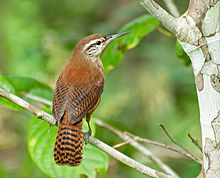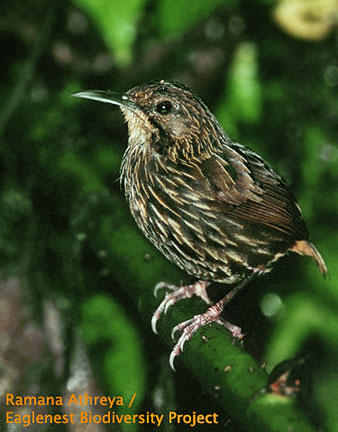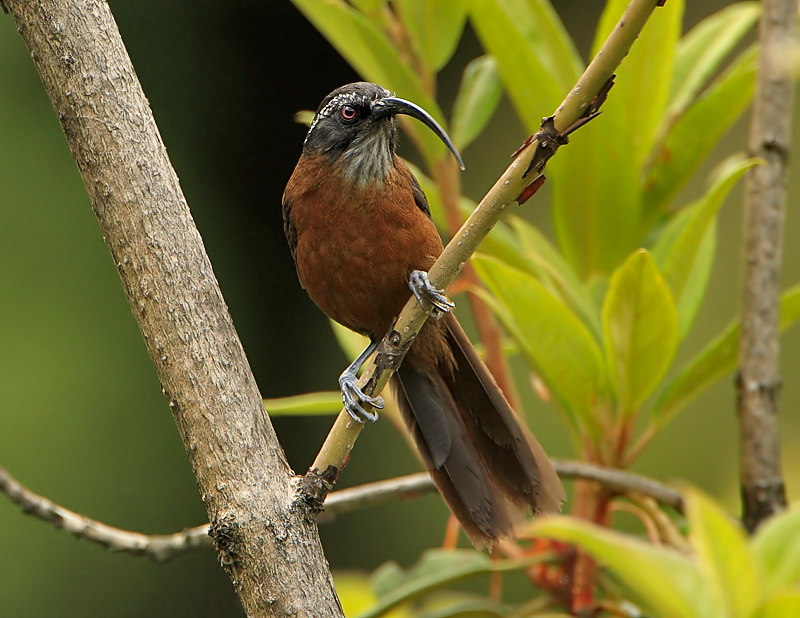
Hylorchilus sumichrasti
TAXONOMY
Catherpes sumichrasti Lawrence, 1871, Mato Bejuco, Veracruz,
Mexico.
OTHER COMMON NAMES
English: Sumichrast’s wren; French: Troglodyte de Sumichrast;
German: Schmalschnabel-Zaunkцnig; Spanish; Saltaparad de
Sumichrast.
PHYSICAL CHARACTERISTICS
6–6.6 in (15–16.5 cm), 1.1 oz (29–30g). A bulky and darkplumaged
wren with a notably long and slender bill. Upperparts
including tail are a deep chocolate-brown. Wings are dull
blackish brown. Throat is whitish brown, chest orange-brown,
belly rich chocolate-brown. Lower belly and flanks have small
white spots. Eyes are brown; bill is very long, slender, and decurved,
blackish with dull orange-yellow base; legs are dark
gray. Sexes are identical. The juvenile has a dull buff throat
with diffuse scaling and whitish flecks on the belly.
DISTRIBUTION
Restricted area in the Mexican states of Veracruz, Oaxaca, and
Puebla; total area is about 2,300 mi2 (6,000 km2), but actual
range within this area is much less due to exacting habitat requirements.
HABITAT
Confined entirely to karst limestone country with large mature
forest canopy.
BEHAVIOR
Typically hops over boulders, tail cocked, bobbing like a dipper.
Is not excessively wary, but rather curious. Generally occurs
low to the ground, rarely at any height in vegetation, and
most frequently on rocks and boulders. Normally found alone
or in pairs. Both sexes sing in a distinguishable manner. Males
have two song types: one an arresting series of loud clear
notes, finishing with a longer series of slow, descending notes;
the other is a song of shorter notes alternating in pitch. Female
song is a single note repeated in a series.
FEEDING ECOLOGY AND DIET
Most often forages in mosses and lichens on boulders and rock
faces, frequently disappearing into crevices. Food is almost entirely
invertebrate.
REPRODUCTIVE BIOLOGY
Little known; only three nests described, two in crevices in
rocks and one in roof of limestone cave. Eggs are white, number
three, and are laid in May. Incubation and fledging periods
are unknown. Not known if the species is multiple-brooded, or
whether polygamy or nest-helping occur.
CONSERVATION STATUS
Near threatened. Highly restricted both in geographic range
and in habitat. Does, however, seem to be able to tolerate
some disturbance to habitat, such as the planting of coffee
bushes, provided the disturbance is moderate. No part of its
range is under formal protection.
SIGNIFICANCE TO HUMANS
None known.
Photo Gallery of - Slender-billed wren




 Animalia Life
Animalia Life